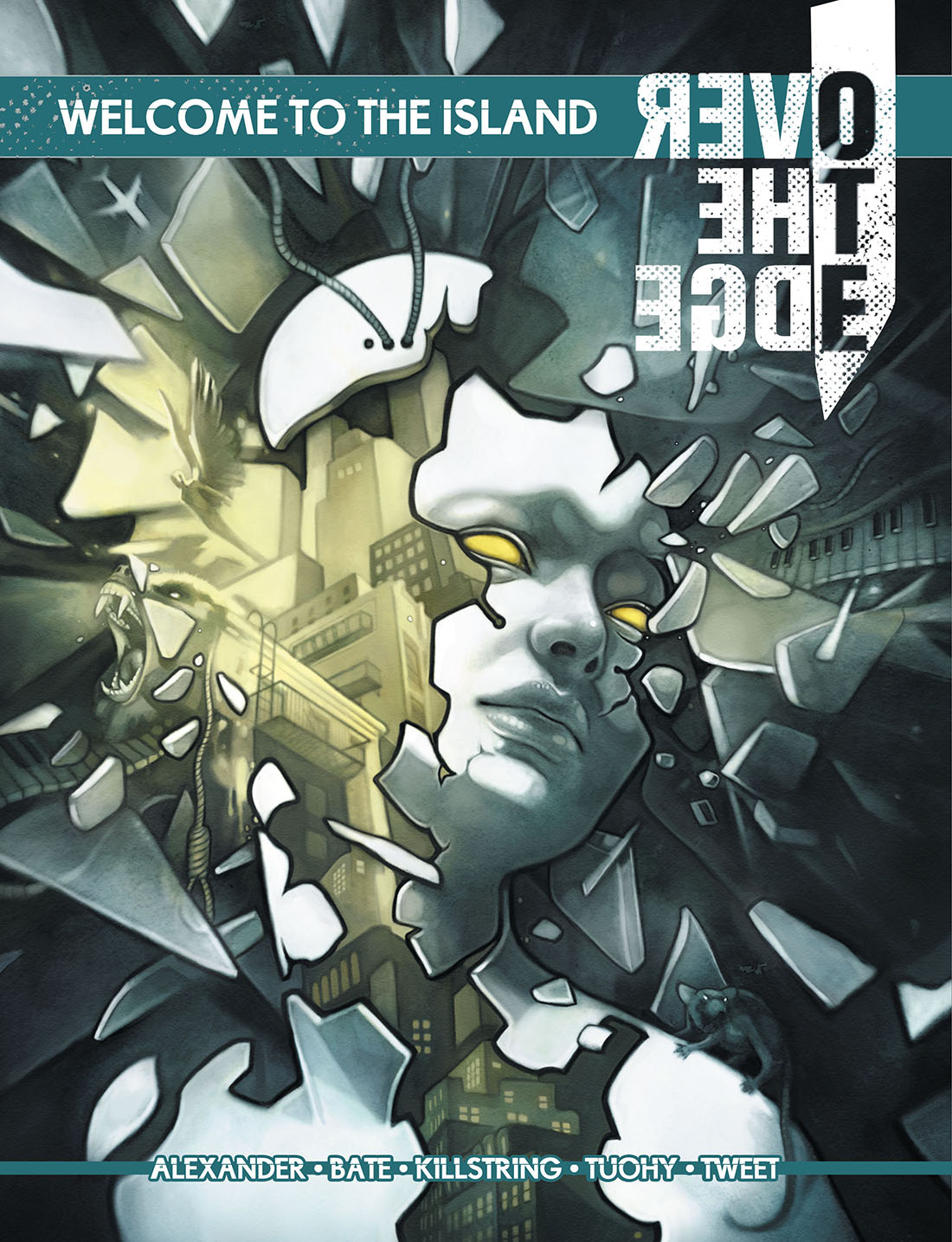
LEAD DEVELOPER: Justin Alexander
Welcome to the Island features four all-new scenarios that can launch brand new story arcs, add intriguing complications to your existing arcs, or explode across you gaming table as exciting one-shots. Each scenario includes custom hooks for agents, burgers, cloaks, gangs, and mystics, making it easy for you to bring the action to your players no matter what kind of trouble they like getting into.
EXPLORE THE ISLAND
BATTLE OF THE BANDS takes you on the ultimate Al Amarjan road trip. There’s only one way to beat this Mover conspiracy. It’s time to get the band back together!
A CONCLAVE OF CHIKUTORPLS, or the Winds of Change Are Blowing (Up), or How I Learned to Stop Worrying and Love the Multidimensional Convergence. Place your bets now.
SEVERSEN’S MYSTERIOUS ESTATE is hosting the most important party on the entire Island, and you’ve got an invitation. Unfortunately, so do Dr. Morpheus, an astral vampire, a team of totem champions, and a Presidentials wetworks squad.
SYMPATHY OF THE D’AUBAINNES sees citizens all across the Edge receive a parcel containing a lifelike rubber mask of one of the D’Aubainnes. Once you put it on, you’ll find you can’t take it off. That’s when the killings start.
Produced with a grant from the Al Amarja Tourism Taskforce. Visit the Island today! Once you’ve come, you’ll never leave!
AWARD-WINNING AUTHORS
- Jonathan Tweet
- Justin Alexander
- Nick Bate
- Jonathan Killstring
- Jeremy Tuohy
WHAT I DID
In addition to working as the lead developer on the book for Atlas Games, I also co-authored “Seversen’s Mysterious Estate” with Jonathan Tweet.
It’s a one-shot sandbox.
An RPG sandbox exists when the players can either choose or define what the next scenario is going to be. So published scenarios are basically never sandboxes, because they almost always include a defined goal. Even old school dungeons, for example, are often designed to be included in a larger sandbox (as one scenario that the players could choose to explore), but are usually not sandboxes in and of themselves.
So how do you have a one session sandbox?
Well, in the case of “Seversen’s Mysterious Estate” the scenario is a party. Just… a party.
It uses the Party Planning scenario structure I developed and shared here back in 2015, and it’s chock full of amazing people and places and things that happen.
But why are the PCs there? And what will they do?
Well: That’s the sandbox. It’s entirely up to them.
One of the reasons we can make this work is because of how I’m doing scenario hooks for Over the Edge adventures. The general philosophy is that if you have a truly interesting situation, then there’ll inherently be lots of ways for the PCs to become interested in it. This doesn’t inherently create a sandbox, but it creates the OPPORTUNITY to start juggling hooks in the sandbox.
In addition, if you have a scenario that supports multiple scenario hooks, then it’s far more likely to be dynamic enough that players can choose how to interact with that scenario and what they want from it (rather than having the GM tell them those things).
For “Seversen’s Mysterious Estate,” one of the scenario hooks is literally just, “You get an invite to a party and you don’t know why. (No one does.)”:
Dr. Seversen has been working with the Cut-Ups to develop the Cut-Up Machine (see Over the Edge, page 180). On three separate test runs, the machine’s output consisted of the PCs’ names, neatly printed out on ParaCon invitations.
For a true one-shot, the super-fast character creation of Over the Edge makes it possible for you to create PCs and then directly ask the players, “So why do you want to go to this party?” Literally a sandbox presentation.
There’s also more traditional hooks. Here’s one:
Mystics: A PC’s mystic shit forms an oneiric resonance with the astral vampire (possibly due to a close encounter with the vampire in a coffee shop while it was attached to a previous host). They have premonitory dreams of its attacks at Dr. Seversen’s conference, including perhaps a very clear vision of its first target. They’ll have to finagle invitations if they want to do something about it.
Another cool thing you can do with all these different hooks is to give different hooks to different PCs: Giving the group lots of different vectors (and competing agendas) will make the scenario inherently more dynamic.
This ALSO makes it easy to use any of the scenarios in the book (not just this one) as a meet-cute for your group: Everybody gets a different hook, they all end up in the same place, and — ta-da! — the party is formed in a team-up of mutual interest(s)!
WHAT ELSE IS IN THERE?
I worked closely with Nick Bate, Jonathan Killstring, and Jeremy Tuohy to create a suite of sweet scenarios.
If you’re looking for a published exemplar of the design principles I talk about here at the Alexandrian — stuff like Don’t Prep Plots, Node-Based Scenario Design, the Three Clue Rule, and the Universal NPC Roleplaying Template — then this is currently THE book for doing so.
One big thing I discovered while developing this book is just how flexible the party-planning scenario structure really is:
- For Jeremy Tuohy’s “Battle of the Bands,” we discovered that you can take the structure on the road, with the entire road trip being built around a variant.
- Jonathan Killstring’s “A Conclave of Chikutorpls,” expands the party-planning structure in time; using party-planning to model a crazed sequence of happenings that take place across several days or even weeks of time.
- We applied many of the same lessons to Nick Bate’s “Sympathy of the D’Aubainnes,” and then expanded it in space, as well, to handle a crazed political crisis culminating in existential riots that wrack the entire island. (Nick also beautifully weds this to a node-based Three Clue Rule investigation.)
(The book actually came out at the beginning of the year. But 2020 has been weird and I’m terrible at self-promotion, so failed to actually mention it here on the site. Check it out. I really am quite proud of it. If you’re buying in print, the deluxe version is very much worth it for the gorgeous full-color art.)
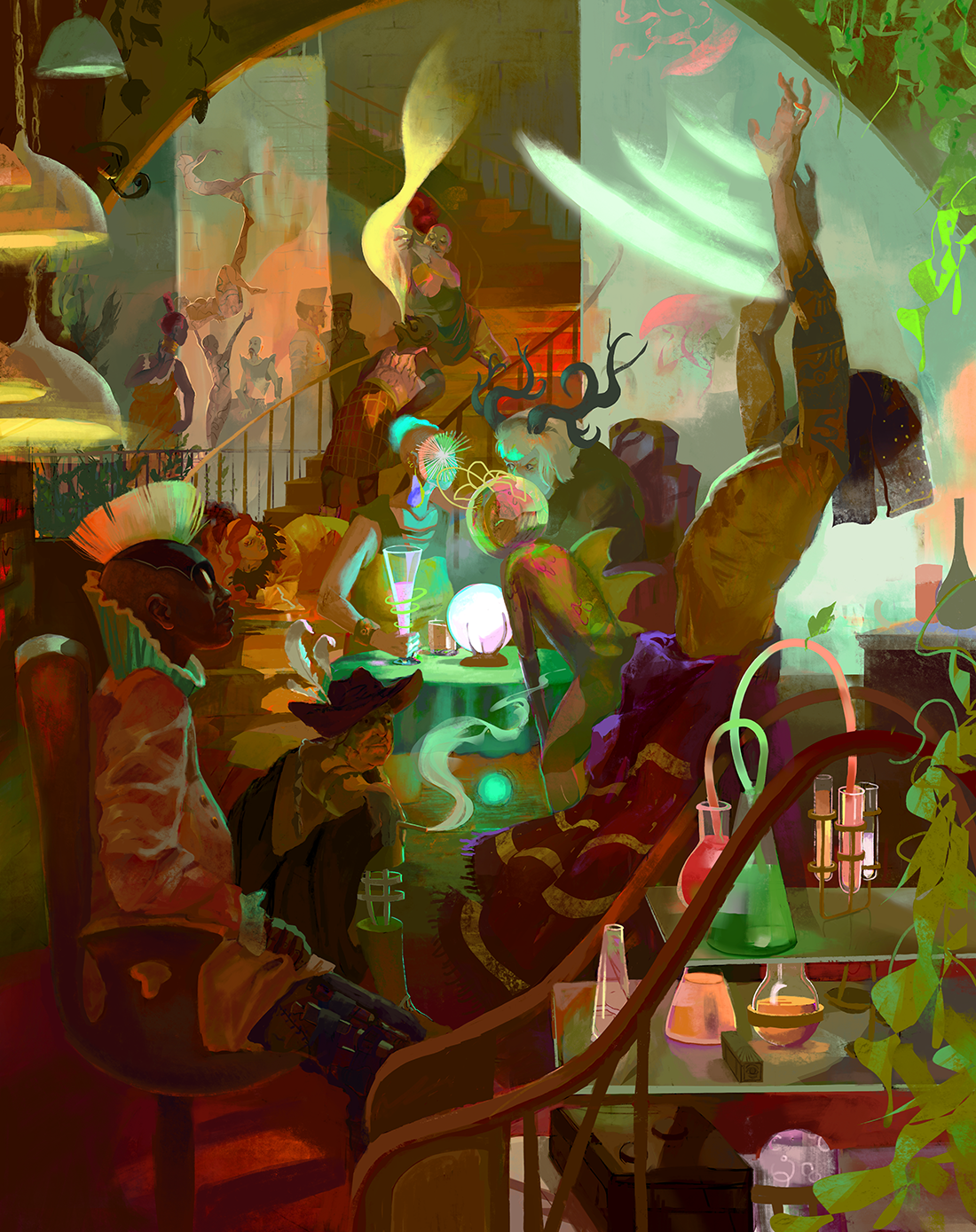
DESIGN NOTES FOR WELCOME TO THE ISLAND
Design Notes: Scenario Hooks for Over the Edge
Design Notes: Scenario Tools
MORE OVER THE EDGE @ THE ALEXANDRIAN
Over the Edge: System Cheat Sheet
Over the Edge: One Weird Twist


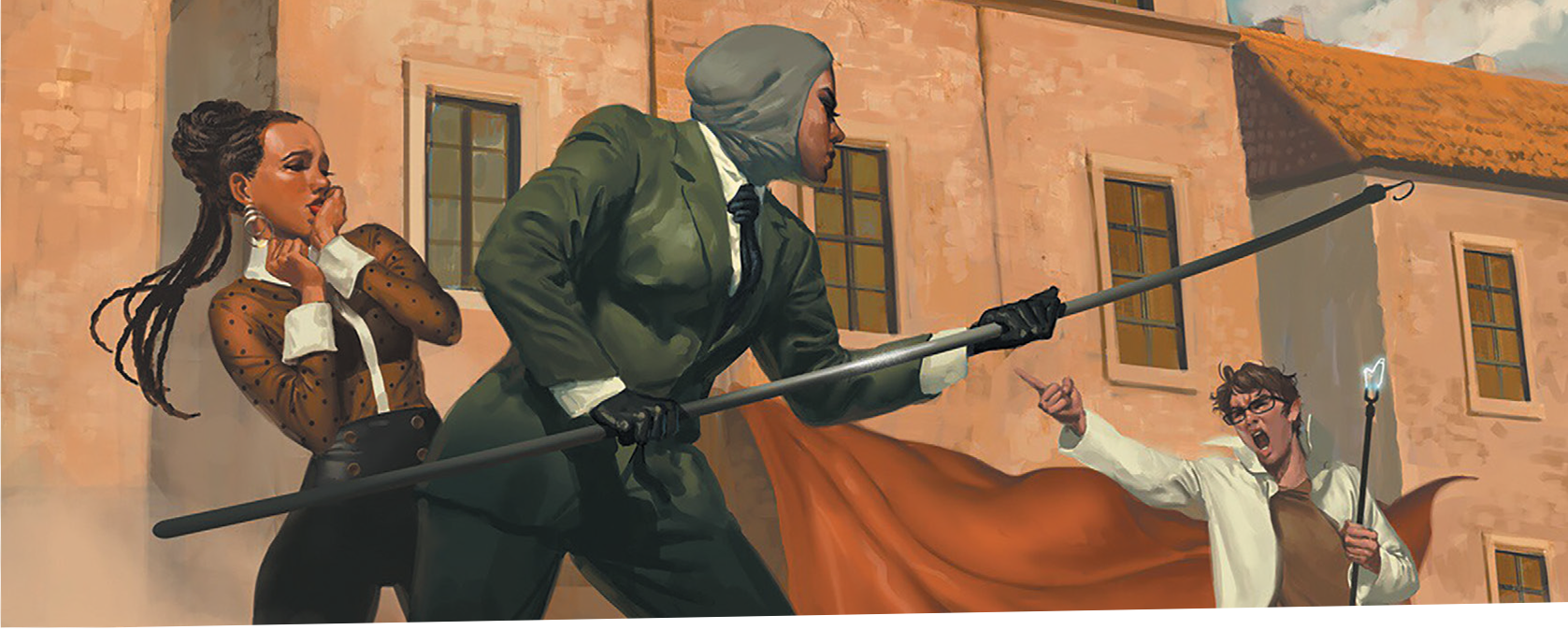
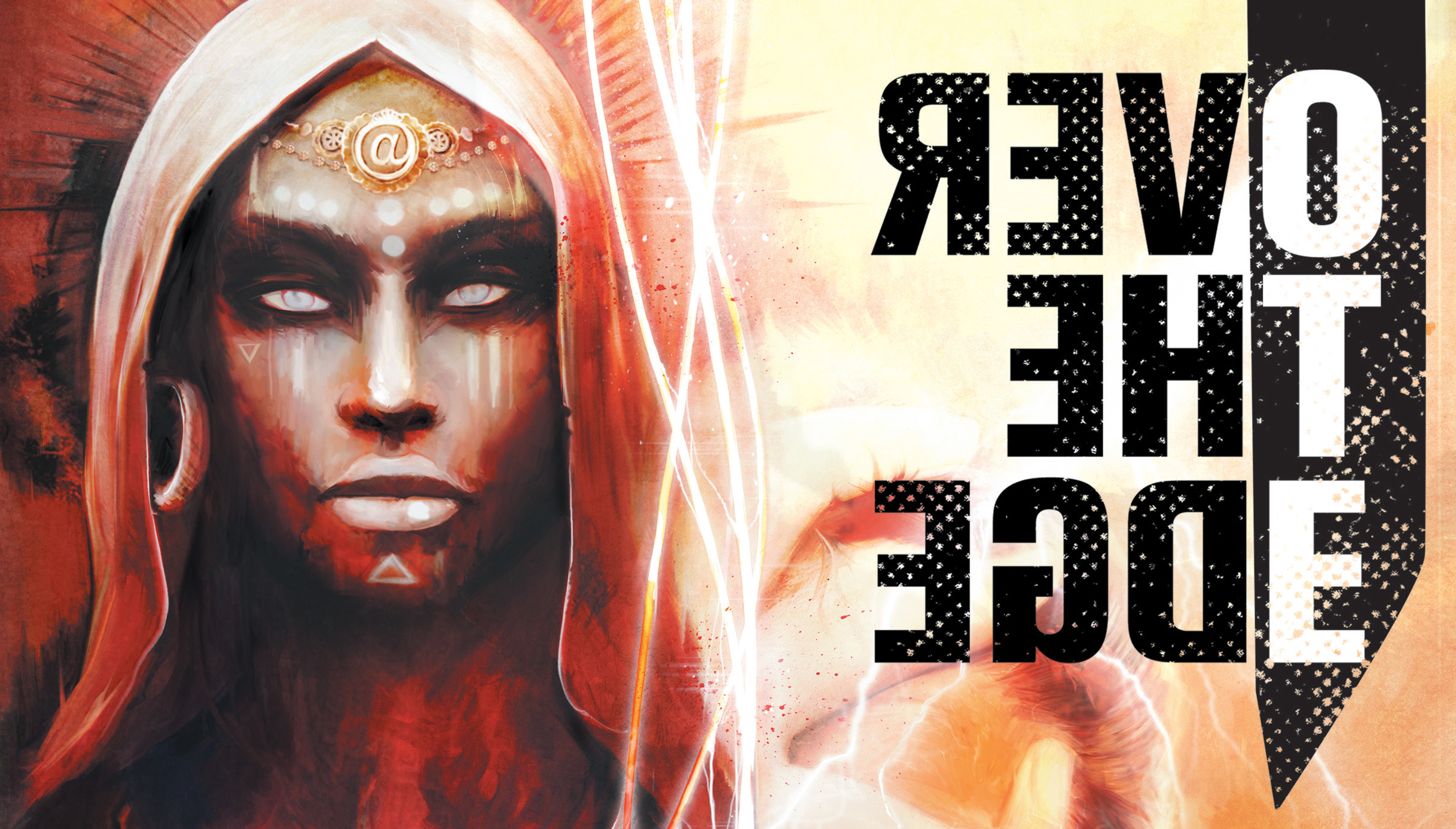


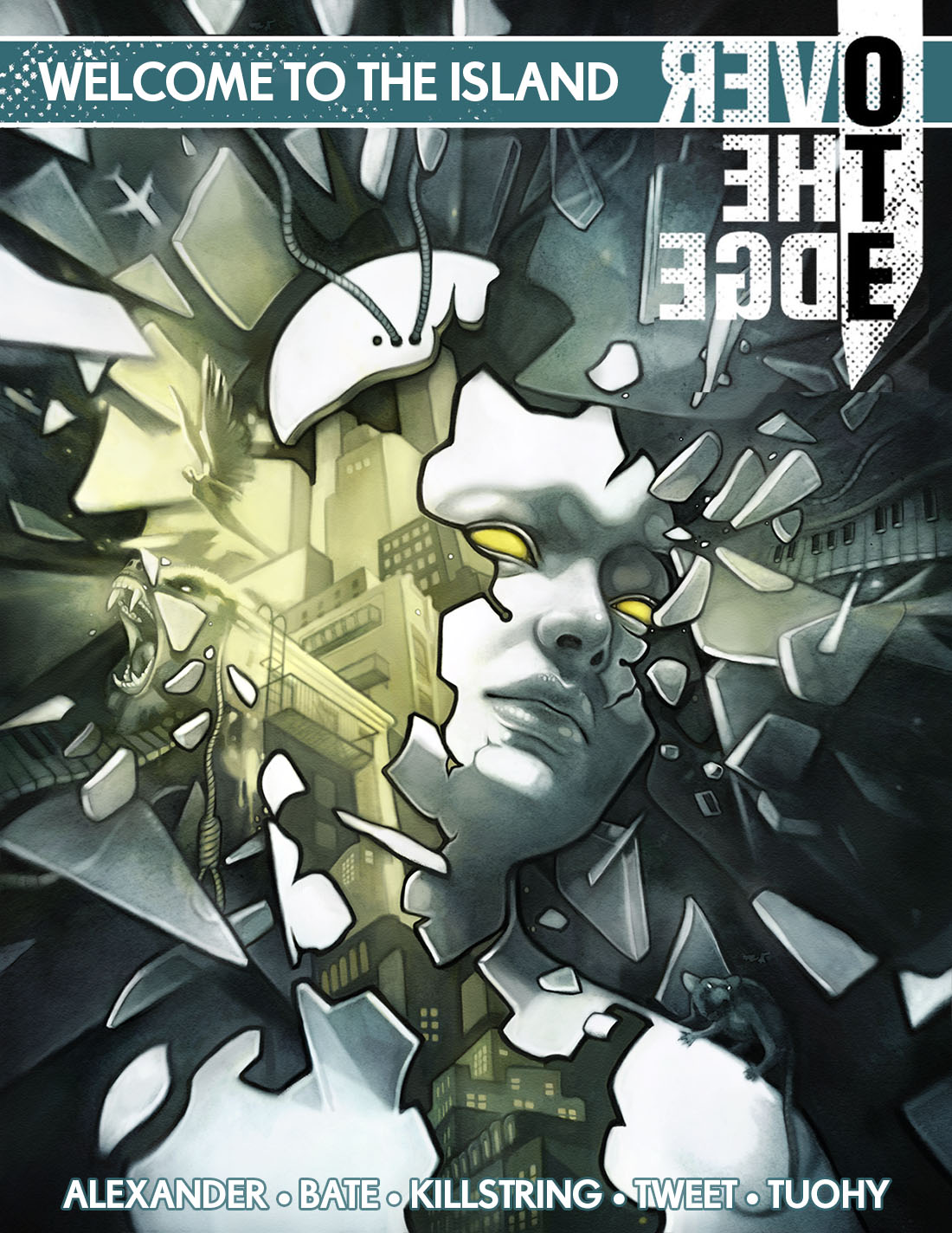 have collaborated on a scenario built around
have collaborated on a scenario built around 









